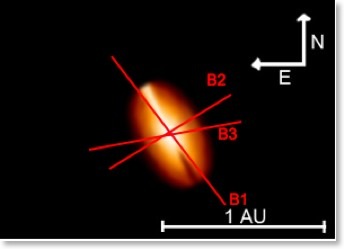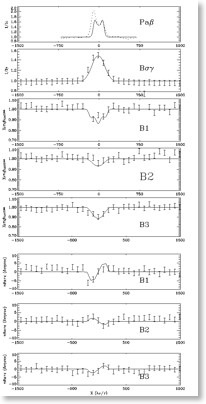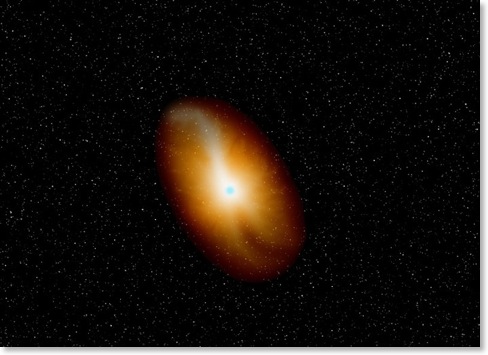We have studied the geometry and kinematics of the circumstellar environment of the Be star κ CMa in the Brγ emission line and its nearby continuum. We have used the VLTI/AMBER instrument operating in the K band which provides a spatial resolution of about 6 mas with a spectral resolution of 1500 to study the kinematics within the disk and to infer its rotation law. In order to obtain more kinematical constraints we have also used an high spectral resolution Paβ line profile obtain in december 2005 at the Observatorio do Pico do Dios, Brazil and we have compiled V/R line profile variations and spectral energy distribution data points from the literature.
Using differential visibilities and phases across the Brγ line we detect an asymmetry in the disk. Moreover, κ CMa is difficult to fit within the classical scenario for Be stars, i.e. a fast rotating B star close to its breakup velocity surrounded by a Keplerian circumstellar disk with an enhanced polar wind. We found that κ CMa seems not to be a critical rotator, the rotation law within the disk is not Keplerian and the detected asymmetry seems to be hardly explained within the ”one-armed” viscous disk framework.

Intensity map in the continuum at 2.15 μm obtained with SIMECA for our best model parameters. The inclination angle is 60° , the central black dot represents the κ CMa photosphere (0.25 mas), the bright part in the equatorial disk is produced by the over-density which is oriented along the B1 baseline. This over-density is also responsible for a 30% emission excess in the asymmetric V part of the Brγ line. The red lines correspond to the projected VLTI baselines used. 
From the top to bottom : Paβ line profile from the Observatorio do Pico dos Dias, Brazil (dotted line) with our best model fit (plain line), Brγ line profile, differential visibilities and differential phases for the three baselines. For each plot, the dots with errors bars are VLTI/AMBER data and the solid line is from our best SIMECA model.
The paper was published in A&A, 464, 73
Artist's view from our best model parameters.
Copyright Meilland 2006.